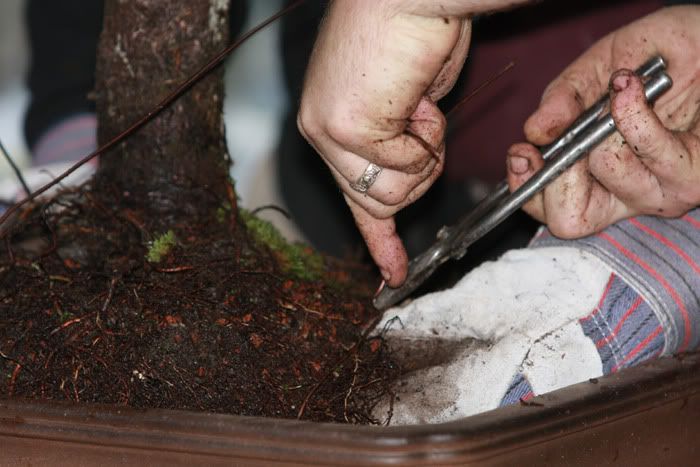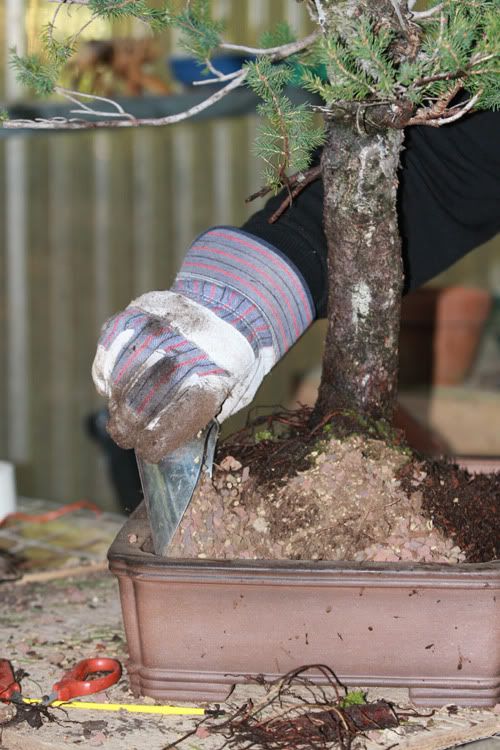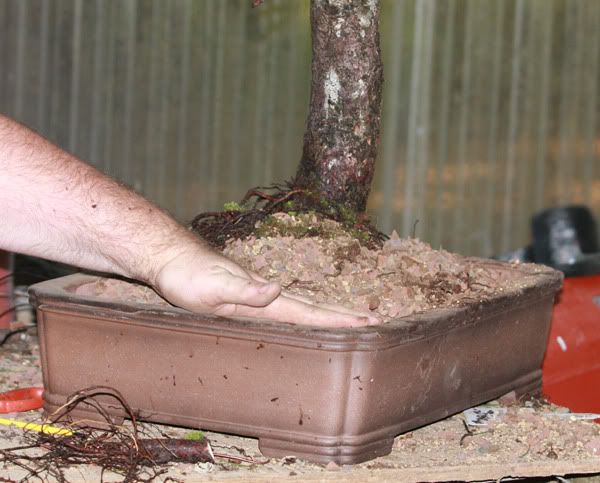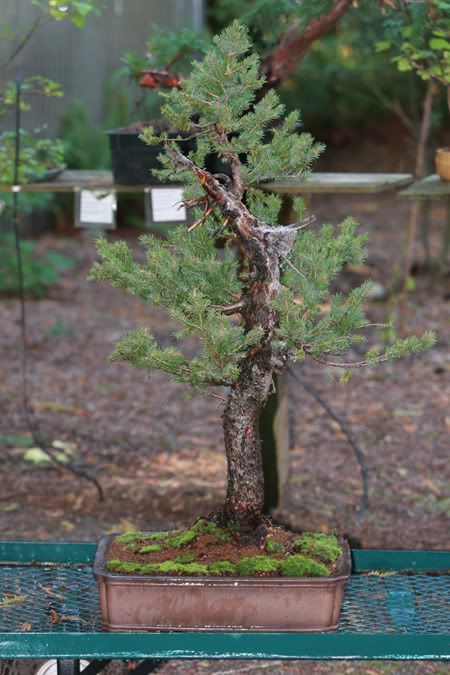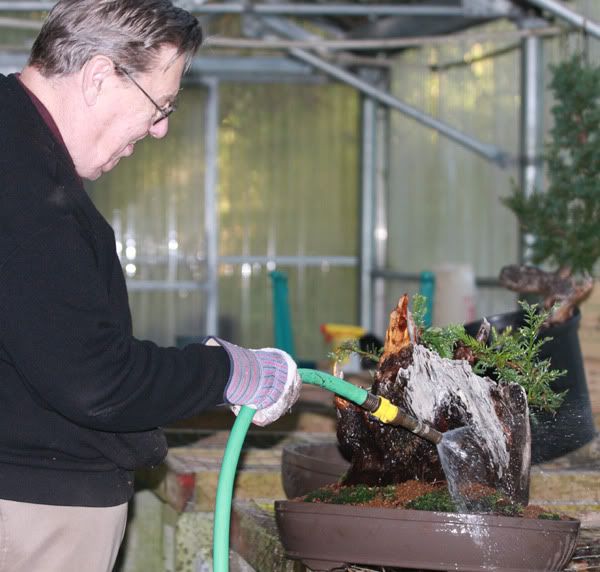Victrinia Ensor
Omono
(The following is a reprint of a write-up I did for the Evergreen Bonsai Club newsletter dated October 2009.)
There is a brief window in the beginning of our fall season, before the leaves have fallen, and the trees go into their deep winter rest, that presents an opportunity to do some end of season repotting with your coniferous bonsai. Sure it’s fine to wait and repot your conifers during the traditional time in February, just as winter’s back is about to be broken by the thaw that leads to spring. But there can be serious advantages to repotting conifers in the fall if one is willing to go to the effort to protect the trees from harsh winter exposure.
One of the biggest advantages is getting a jump on next year’s growing season. By repotting now, the tree can begin to heal and recover before it goes dormant; giving the tree more time to enjoy that strong growth spurt that often happens with a good repot when spring comes. But make no mistake, trees which are repotted at this time will need their roots protected from hard freezing temperatures, and will need to be sheltered from wind. Our gusty fall and winter winds can be dangerous for a freshly potted tree. Unprotected from those winds, a tree may shift around in the pot, potentially damaging its roots since the tree won’t have a chance to “grab the pot” the way it would once spring growth generates new roots. If you do not have a set up which will allow you to do this, it’s best to wait until February/March before touching the roots on your tree.
Recently Eric Ridgeway and Charlie Anderson got together to take care of a couple of their larger established conifer trees. Eric recently acquired a nice Engelmann Spruce (Picea engelmannii), which he would like to have ready for the 2010 convention. It’s an old collected specimen from Mount Hood, OR. By doing the repot now, Eric gives the tree a good lead on the growing season next year in which to respond to the styling and wiring which will occur this fall.
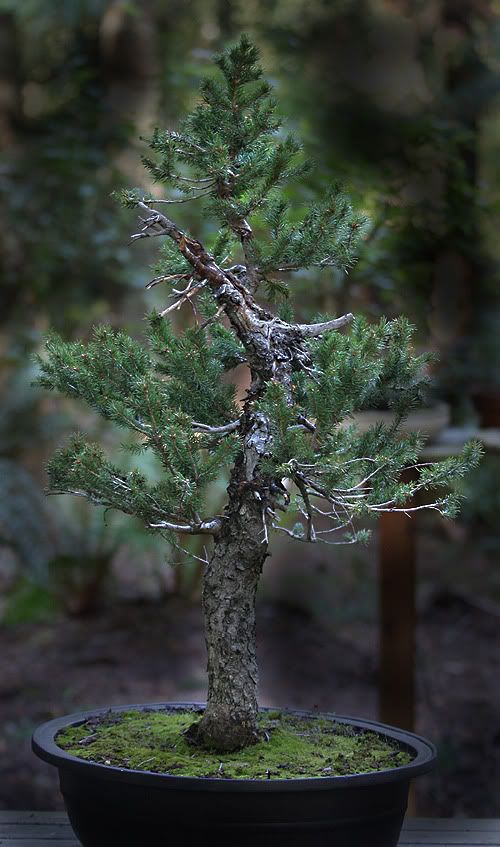
It’s very important to have your new pot prepared prior to getting the tree out of its current container. While there are many ways to do this prep work, the general principal is to cover your drainage holes with mesh and secure them in, run wires which will tie the tree in to the pot, cover the first inch with a coarse layer for drainage, and then add a thin layer of the actual potting soil to cover the drainage layer.
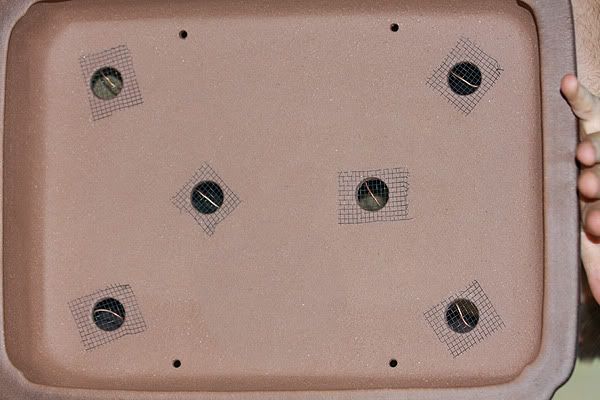
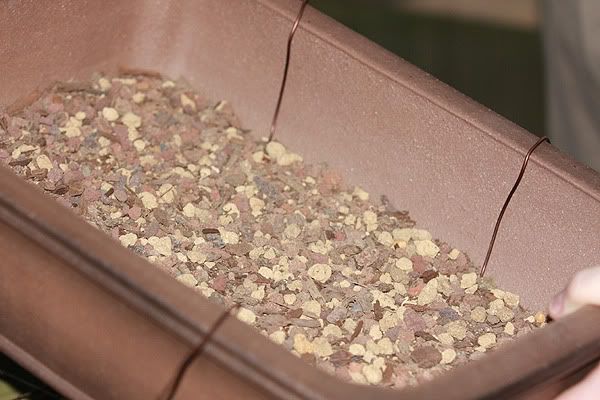
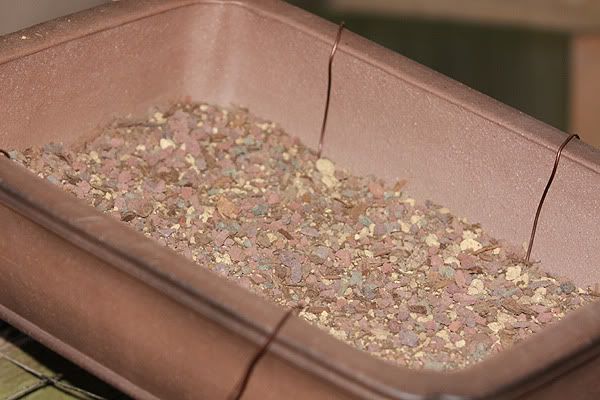
After removing the tree from its pot, the tree’s root ball is initially loosened by spraying with a hose. (Take care not to use any more water pressure than needed, but realize that many of these peripheral roots will be removed anyway, so the damage from the water is minor.)
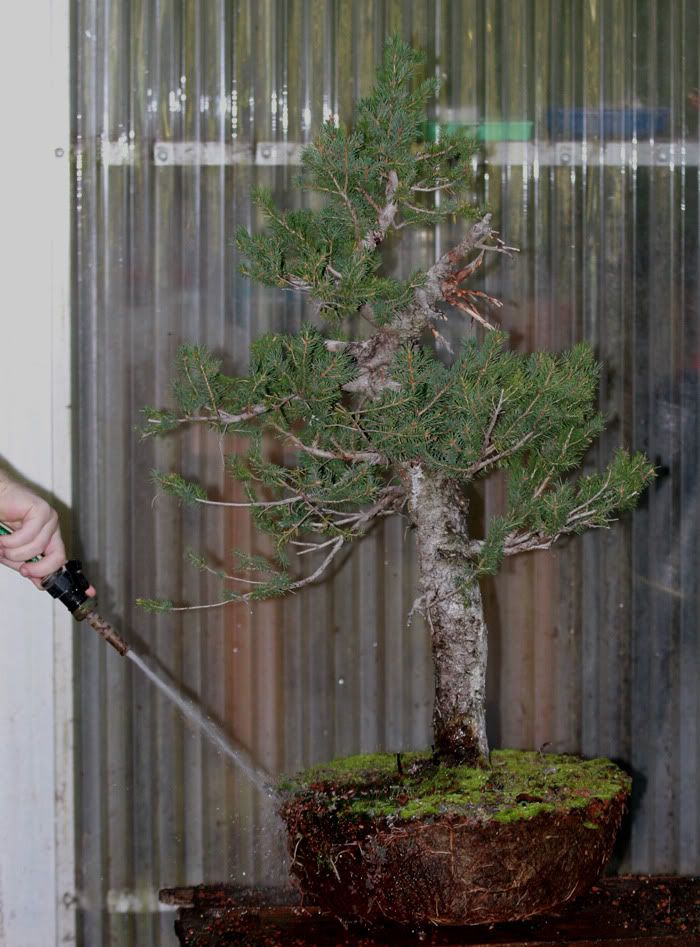

The root ball is further worked out by using a root hook to loosen the old soil and effectively removes the peripheral roots. When the edges have been worked over, the tree is turned on its side and the bottom of the root system is similarly reduced. Excessively large roots are removed with concave cutters or garden shears. (Please note that the tree’s old soil is not being completely removed. It is just being reduced enough to promote vigorous new growth, and allowing it to be placed into a smaller pot more appropriate for show.)
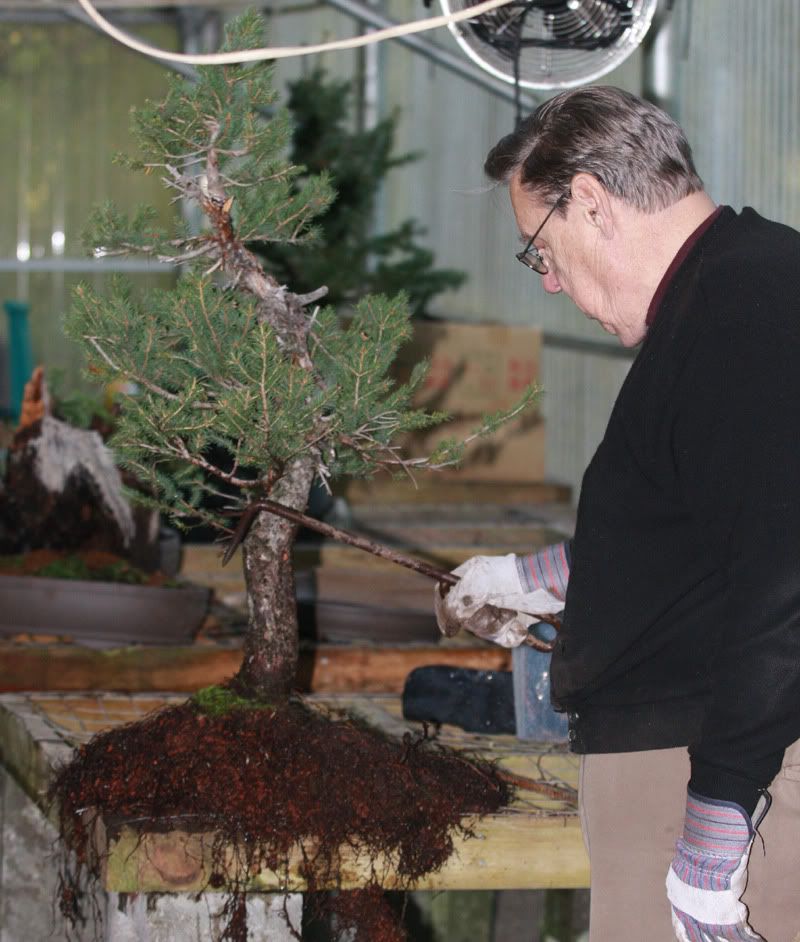
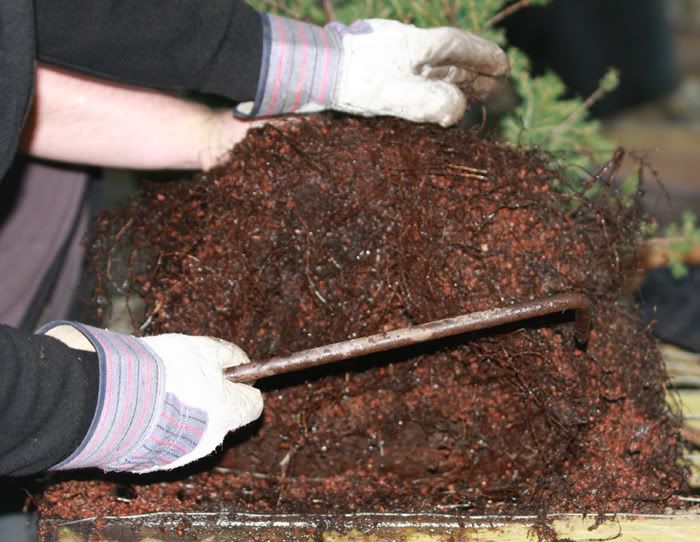
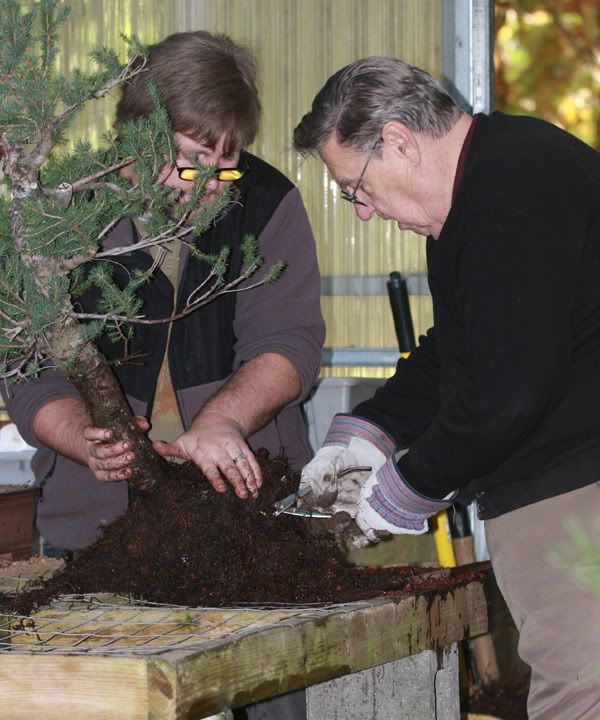
There is a brief window in the beginning of our fall season, before the leaves have fallen, and the trees go into their deep winter rest, that presents an opportunity to do some end of season repotting with your coniferous bonsai. Sure it’s fine to wait and repot your conifers during the traditional time in February, just as winter’s back is about to be broken by the thaw that leads to spring. But there can be serious advantages to repotting conifers in the fall if one is willing to go to the effort to protect the trees from harsh winter exposure.
One of the biggest advantages is getting a jump on next year’s growing season. By repotting now, the tree can begin to heal and recover before it goes dormant; giving the tree more time to enjoy that strong growth spurt that often happens with a good repot when spring comes. But make no mistake, trees which are repotted at this time will need their roots protected from hard freezing temperatures, and will need to be sheltered from wind. Our gusty fall and winter winds can be dangerous for a freshly potted tree. Unprotected from those winds, a tree may shift around in the pot, potentially damaging its roots since the tree won’t have a chance to “grab the pot” the way it would once spring growth generates new roots. If you do not have a set up which will allow you to do this, it’s best to wait until February/March before touching the roots on your tree.
Recently Eric Ridgeway and Charlie Anderson got together to take care of a couple of their larger established conifer trees. Eric recently acquired a nice Engelmann Spruce (Picea engelmannii), which he would like to have ready for the 2010 convention. It’s an old collected specimen from Mount Hood, OR. By doing the repot now, Eric gives the tree a good lead on the growing season next year in which to respond to the styling and wiring which will occur this fall.

It’s very important to have your new pot prepared prior to getting the tree out of its current container. While there are many ways to do this prep work, the general principal is to cover your drainage holes with mesh and secure them in, run wires which will tie the tree in to the pot, cover the first inch with a coarse layer for drainage, and then add a thin layer of the actual potting soil to cover the drainage layer.



After removing the tree from its pot, the tree’s root ball is initially loosened by spraying with a hose. (Take care not to use any more water pressure than needed, but realize that many of these peripheral roots will be removed anyway, so the damage from the water is minor.)


The root ball is further worked out by using a root hook to loosen the old soil and effectively removes the peripheral roots. When the edges have been worked over, the tree is turned on its side and the bottom of the root system is similarly reduced. Excessively large roots are removed with concave cutters or garden shears. (Please note that the tree’s old soil is not being completely removed. It is just being reduced enough to promote vigorous new growth, and allowing it to be placed into a smaller pot more appropriate for show.)





